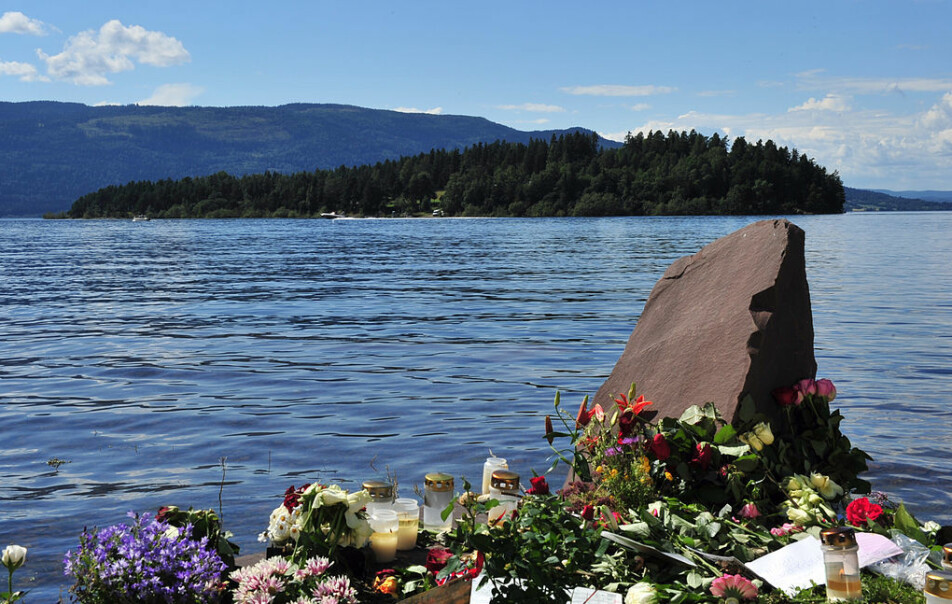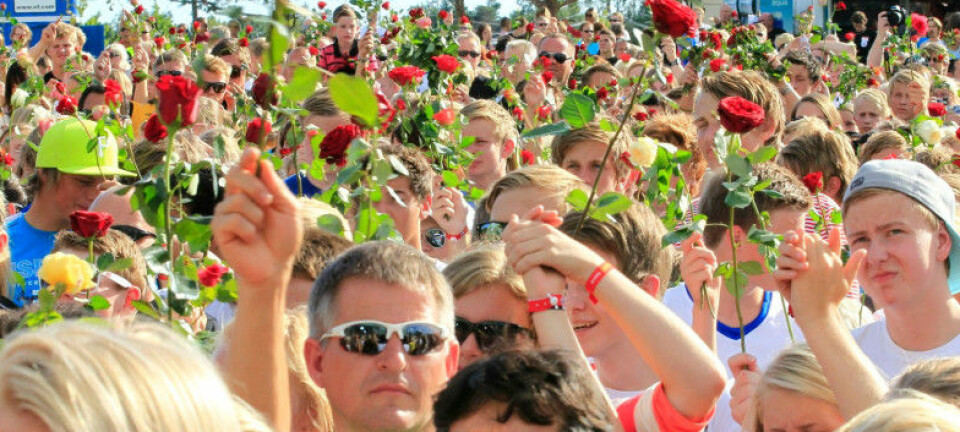
Survivors from the Utøya massacre still struggle with trauma
This summer marks ten years since the terror attacks on the political youth camp at the island Utøya. More than a third of the survivors still struggle with post traumatic stress symptoms, according to new research.
“It is very serious that so many, too many, are struggling with these problems over time,” project leader Grete Dyb says to the Norwegian news agency NTB.
Dyb heads a research group at the Norwegian Centre for Violence and Traumatic Stress Studies (NKVTS) which has collected data on survivors from Utøya and their next of kin on four occasions since the attacks in July 2011.
Politically active youth were at that time gathered for the Labour Party’s youth organization’s annual summer camp when the perpetrator, Anders Behring Breivik, disguised as a police officer chased them around the island for more than one and a half hours, shooting those he came across. 69 people lost their lives on Utøya Island, and 66 were physically injured.
The study shows that more than every third survivor from the terror at Utøya are still struggling with post traumatic stress disorder. The corresponding figure for the next of kin is one in five.
The most recent round of interviews was done last year, 8,5 years after the terror attack.
Reseracher: Discouraging
Dyb says the results are discouraging, pointing to the fact that there has been no decline in the number of survivors who struggle since the second round of interviews, which was done 14 months after the terror attack.
“We expected that some would still be having difficulties, but not that it would apply to so many of them,” she says.
Lisbet Røyneland is the leader of the national support groups after the 22. July-terror. She find it sad that the number of survivors who struggle has not declined.
“This tells us that help is still needed. Treating people who experience trauma after violent terror attacks takes time,” Røyneland says.
As of 2020, four out of five Utøya survivors were fully or part-time employed either doing work or studies. One in five received unemployment benefits, disability benefits or other support schemes, according to the study.
Dyb says that many of the survivors carry with them what happened in their daily lives.
“We are talking about people here who are in an incredibly demanding phase of life – they are supposed to be getting their educations, entering the labour market and establishing their social lives. This may have contributed to making their every day lives more difficult”, she says.
Not receiving the health care they need
One in three Utøya-survivors say they do not have access to necessary help within the health care system.
Dyb is of the opinion that the health-related help schemes for the Utøya youth were dismantled too soon.
“After a year, many of them lost the help they were getting in their municipalities, following a recommendation from the Directorate of Health. This was based on a very optimistic evaluation. Many hit the wall after that first year, just as the health measures disappeared. We also know that not everybody was offered adequate help,” Dyb says
She stresses that it is never too late to seek help in order to work through trauma.
“It is never too late to address symptoms. There is adequate help out there which we know helps,” she says.
Subjected to threats and hate speech
Røyneland from the support group, highlights another finding from the study: One in three Utøya-survivors have experienced becoming the subject of hate speech or have received threats.
The support group leader finds this scary.
“We have created a resource via the support group which those who are affected can turn to for help in how to handle threats,” she says.
Current leader of the Labour Youth AUF, Astid Hoem, says to Norwegian newspaper VG (link in Norwegian) that she has had to get a secret phone number, and that she has stopped reading comments online. She says she has received messages ranging from people who are tired of reading about the terror attacks in the media to people who say she should have been killed at Utøya.
May silence survivors
AUF-leader Hoem says to VG that she is not surprised by the findings of the new study.
“A lot of people think it’s the ones who are most profiled and who are more in the media that receive these messages. But this shows that also survivors who might be in the local newspaper just a few times are also harassed and may receive death threats based on July 22nd,” she says.
Hoem says that the youth organization also has members who are targeted by people on the streets after having appeared in the media and given the same comments live as those which are found online. She tells VG that AUF report “all” the incidents to the police, but the cases are often closed.
Project leader for the Utøya study, Grete Dyb, fears that these hateful messages may contribute to Utøya-survivors shying away from public life.
“I think for certain that this will lead to many staying silent and withdrawing. We know this from other similar incidents, and it is something that youth politicians have talked about previously. Utøya-survivors are an especially vulnerable group and these are young people,” she says to VG.
“This is very serious. We need these experiences and these voices,” she says.
The Utøya study has been conducted four times since the attacks, but this is the first time that questions were asked about hate speech and threats. Dyb says they will continue to study this topic in the future.


































